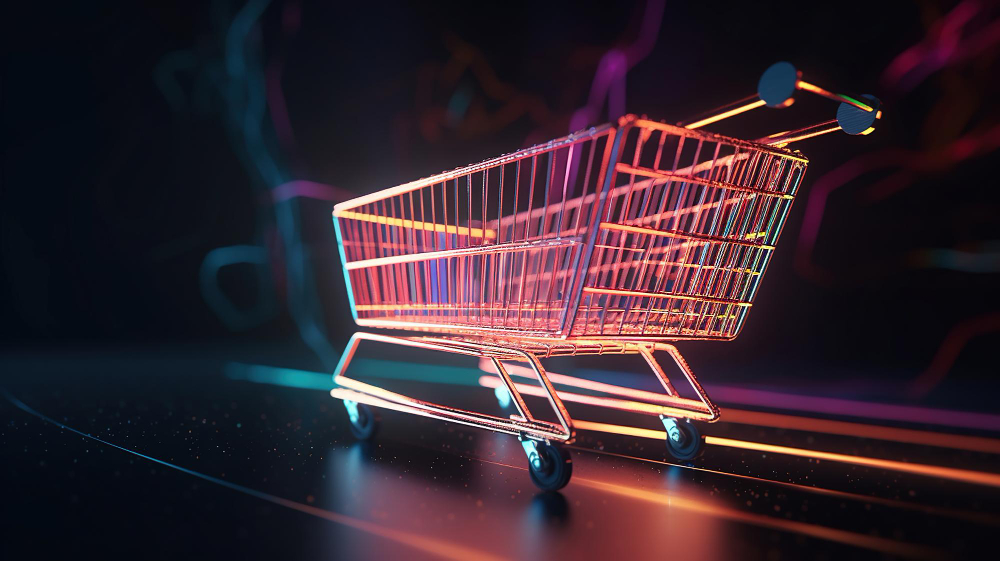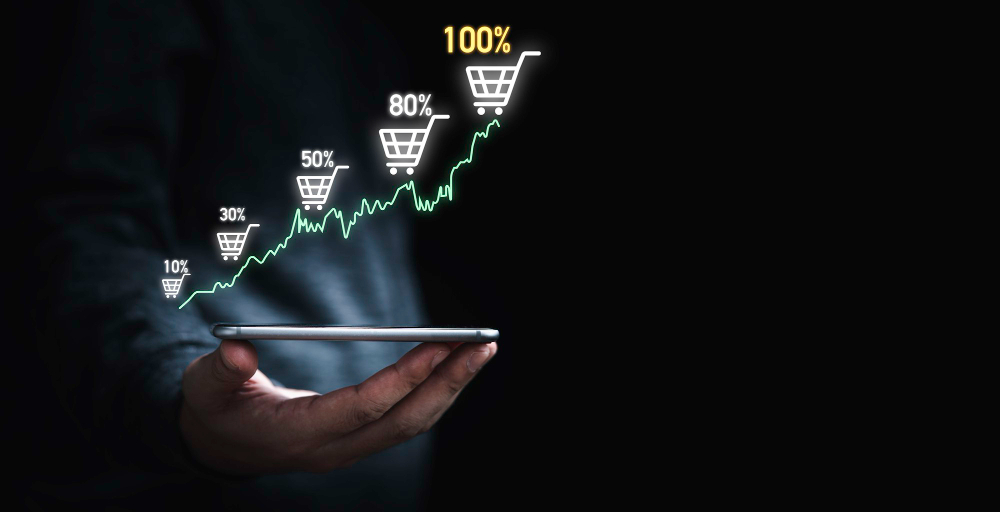Google’s search results always change, but the change from 2024 to 2025 cuts deeper for e-commerce sites. In 2024, a perfectly placed product listing with a descriptive title and decent image could easily steal clicks. These days, the results page works more like an interactive guide. It is a planned environment where consumers can view everything. See product details, compare products, and even buy without ever leaving Google.
This shift is spearheaded by serp features, the additional bits that show up in search results in addition to plain blue links. The features of serp are product carousels, reviews, images, featured snippets, and the Google knowledge panel. In 2024, these features were useful extras. But, in 2025, they’re at the heart of online shopping.
That transition requires businesses to rethink how they do E-commerce SEO.
When your products show up in these positions, you have visibility that competitors can’t help but notice. But it doesn’t happen automatically. Google determines which results warrant these enhancements based on relevance, precision, and how well your site is organized.
The Importance of Data Accuracy for 2025 E-commerce Visibility

Your product data in 2025 is just as valuable as your product. Google is bringing more information directly into search results, and it is counting on your structured data to make it happen. When your feed includes incomplete prices, stale stock, or incorrect descriptions, you are at risk of losing real estate in your important serp features.
Data accuracy isn’t just about avoiding mistakes. It is about creating a consistent and trustworthy profile for your brand. When your product details match across your website and Google Merchant Centre, you are giving Google a stronger reason to feature you. This can mean showing up in product carousels and rich snippets. Even on a Google knowledge panel.
For E-commerce SEO, this means daily tracking and rapid updates are imperative. Alterations in price, new images, or even updated shipping estimations ought to be seen in your listings as soon as possible. Automate syncing your data on multiple platforms, but also manually check. A blank field or an old review score can put you out of a good spot overnight.
Clean and complete product data is now a ranking signal in itself. Get it right, and you are feeding Google exactly what it needs to put you ahead of competitors.
What Changed Between 2024 and 2025

While many features from the previous year remain, their design and impact in 2025 have grown stronger.
- Product Knowledge Panels: Originally restricted to business and brand information, these now display product information such as price ranges, seller ratings, availability, and even a “buy now” option. For certain searches, you can even view shipping times or seller return policies. If you’ve implemented your structured data properly and maintained it in an up-to-date fashion, your product might have this space and drive out competition.
- Zero Click Search and Zero Click Traffic: Zero click search happens when users get their answers directly on the search page, without clicking any results. For e-commerce, that often means prices, ratings, and availability are shown upfront. The result is zero click traffic, visibility without the website visit. This is more common now than in 2024 and affects how you measure success.
- Answer Engine Optimization (AEO): With AEO reshaping SEO, Google prefers concise, clear answers that it can pull straight into results. This applies to product FAQs, specifications, quick comparisons, and even short how-to guides for product use.
- Richer Snippets: Listings now display more information than before. Price, stock levels, delivery dates, and product highlights can all appear if your data is accurate and well-structured. In some cases, video previews and review highlights are also pulled in, making the snippet almost a mini product page.
These upgrades mean that your e commerce seo approach has to go beyond keywords and backlinks. You must make your site’s information easy for Google to read, rich enough to fill these features, and attractive for shoppers to engage with directly in the search results.
Why Tracking and Optimization Are Now Essential
![]()
It’s not enough to know you rank for a keyword. You need to know how you appear for it. That’s where google serp tracking comes in. By monitoring your presence across different SERP features, you can spot trends, find missed opportunities, and adjust your strategy before sales are affected.
Advanced tools now give far more than position data. The best serp tracking tool in 2025 can tell you:
- Whether your product is in a carousel or a Google knowledge panel
- Which keywords trigger rich snippets for you and your competitors
- How your product’s appearance changes over time, down to image and review updates
On top of that, serps keyword tracking lets you see exactly how your priority keywords are performing across these features. Are you showing up for them? Are they slipping? Are competitors starting to take over? This visibility is vital for staying ahead in a crowded market.
Once you know where you stand, a serp snippet optimization tool can help refine your titles, product descriptions, and metadata. Testing small changes to see which versions get more clicks or are more likely to be pulled into a snippet is now a smart, ongoing part of seo strategy for ecommerce website planning. The brands that treat this as a continuous process, not a one-time fix, are the ones winning more shelf space in the search results.
Creating a 2025-Ready SEO Plan for E-commerce

Your seo for ecommerce website plan must keep pace with today’s search landscape. In 2025, the best SEO Checklist 2025 for an e-commerce company could be this:
- Structured Data Setup: Implement schema markup to provide Google with concise product information. Prices, reviews, inventory, shipping duration, and even return policies.
- 2. High-Quality Images: Post high-quality, well-lit images that are compatible with Google’s display standards and distinguish your products amidst competitive results.
- 3. Short, Clear Copy: Craft product descriptions and responses that can be copied straight into featured snippets and features of serp
- Regular Updates: Refresh your listings with recent prices and promotions. Update inventory information so you stay in sync with current data.
- Customer Reviews: Invite feedback to increase trust indicators for buyers and Google’s algorithms.
- Mobile Optimisation: Ensure your site is fast to load and functions well on mobile phones. Also, offers frictionless purchasing.
Blogging comes into play as well. Through the use of e-commerce blogging strategies, you can write entries that provide answers to customer questions, outline product benefits, and satisfy concerns about buying in simple terms. Such content tends to get highlighted in snippets, attracting visitors further up the buying cycle. You can even target holiday trends or product comparisons to capture interest prior to shoppers making a purchase decision.
Once these steps are well-planned, you have a higher chance of showing up in multiple serp features. Even in zero click search instances, keep your brand in front of buyers at the very moment they are making purchasing decisions.
Why This Matters to Businesses

Even with fewer clicks, the SEO benefits for businesses in 2025 are evident and well worth the investment.
- Increased Brand Impressions: Appearing in several places on a search page keeps your brand in front of customers.
- Authority Boost: When Google chooses to display your products in rich snippets or panels, it tells people you’re a trusted source. That trust carries weight.
- Influence Over Time: A shopper might skip your site today. But if they keep spotting your products in their searches, your brand becomes a natural option when they are ready to purchase.
- Competitive Advantage: Businesses that research and embrace the latest serp features can outperform others in the market.
Why Content Still Drives Ecommerce Success in a SERP-Heavy World

It’s tempting to think that with so many buyers never leaving Google, content is less important. The reality is the opposite. High-quality, targeted content is what earns you a place inside those features of serp in the first place.
If your store answers product questions better than competitors, you’re more likely to be pulled into featured snippets or AEO-driven results. A strong seo strategy for ecommerce website planning still involves product pages, but now it also includes blog posts, comparison guides, FAQ sections, and seasonal content. These not only drive clicks but also increase your odds of showing up in zero click search results, where visibility alone builds trust.
One of the smartest moves is to pair product listings with e-commerce blogging strategies. For example, a post comparing two popular products can rank for multiple queries and get pulled into a snippet. Another post on “how to choose” tips can secure placement in answer boxes.
Content also keeps your site fresh, signalling to Google that your store is active and relevant. This boosts your standing in both traditional rankings and serps keyword tracking metrics. Simply put, content is the hook that lands you inside the most valuable parts of the modern SERP.
The Way Forward

In 2024, winning meant ranking high and getting clicks. In 2025, winning means dominating every space where your product can appear. That’s why working with a skilled Content Marketing Agency is now more valuable. They understand how to craft content, titles, and descriptions that work within these new SERP realities.
The shift is simple to understand but big in impact: Google is becoming not just a search engine, but a shopping assistant. That means your competitors are no longer just other sellers; you’re competing with the SERP features themselves for attention.
To stay ahead:
- Keep tracking performance with advanced tools
- Optimise content for snippets and panels
- Update product data often
- Use structured data to help Google showcase your products
Do this, and you won’t just keep up with Google’s ecommerce SERP changes from 2024 to 2025, but you’ll turn them into an opportunity to grow your visibility, build trust, and increase sales.

